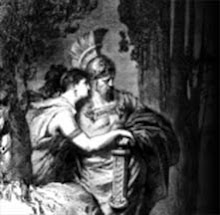Also known as Cubist Realism, and related to the Art Deco movement, Precisionism was developed in the United States after World War I. The term for this movement was coined in the 1920s, and influenced by the Cubist and Futurist movements; the main themes for these paintings were mainly regarding industrialization and modernization of the American landscape. These elements were depicted with the use of precise and sharply defined geometrical shapes, a reverence for the industrial age, but with social commentary not a directly fundamental part.
The degrees of abstraction ran the spectrum as some works had photo realistic qualities, and though the movement had no presence outside of the United States, the artists that made up this particular grouping were a closely knit collective remaining active through to the 1930s. Georgia O’Keefe remained as one of the leading proponents of this style, and stayed so for many years afterwards until the 1960s, her husband was a highly regarded mentor for the group. In a post post-Expressionist phase of life in the art world, Precisionism has affected and influenced the movements of magic realism which utilizes aspects such as juxtaposing of forward movement with a sense of distance, and pop art in which themes from mass culture were used to define art much there forward.
Just after the 1950s began, the movement of pop art was clear in places such as Britain and the United States, and employed elements of advertising and comic books to create a foundation that might have been taken as a reaction to the then popular movement of abstract expressionism. Though the term wasn’t coined until 1958, it was later linked with Dadaism from the beginning of the century, and at one point was called Neo-Dada because of the strong influence from artist Marcel Duchamp. Later affecting artists like Andy Warhol and Jasper Johns, bringing the definition to come to mean one of low-cost mass-produced and gimmicky artwork, and stressing everyday values with common sources like product packaging and celebrity photographs.
By exploring that fraction of everyday imagery, the artists found themselves working with contemporary consumer culture, and this became apparent in parts of Britain, Spain, and Japan around the same point in time. In Britain in particular, where pop art seemed to stem from at that point in 1947, and many works began blurring the boundaries between art and advertising. Whereas in Spain, the movement became interrelated with the “new figurative”, the work arose from the roots of informalism which began to be a critical aspect in this part of the world.
In Japan, pop art has been seen and utilized throughout much of the country’s native artwork through such means as Anime and the “superflat” styles of art, and became the means through which the artists could further critique their own culture through a more satirical lens. When choosing a stimulating piece by these artists, it may be a more invigorating exercise to find some of those other artists to whom these later artists owe much of their inspiration towards their own work, and Precisionism is just as appropriate a place to start for you as anywhere else in the artistic spectrum.
Today, Precisionism can be seen as fundamental influence in commercial and popular art, but cannot be too overlooked as being one of a few different movements to affect our present day stance on art’s utility and functions. With the postmodern present coming to light, maybe we shall once again be drawn back to the past that we have come to take for granted too often, and reveal a new age to define a new century of experience.
Sunday, March 02, 2008
Subscribe to:
Post Comments (Atom)




No comments:
Post a Comment